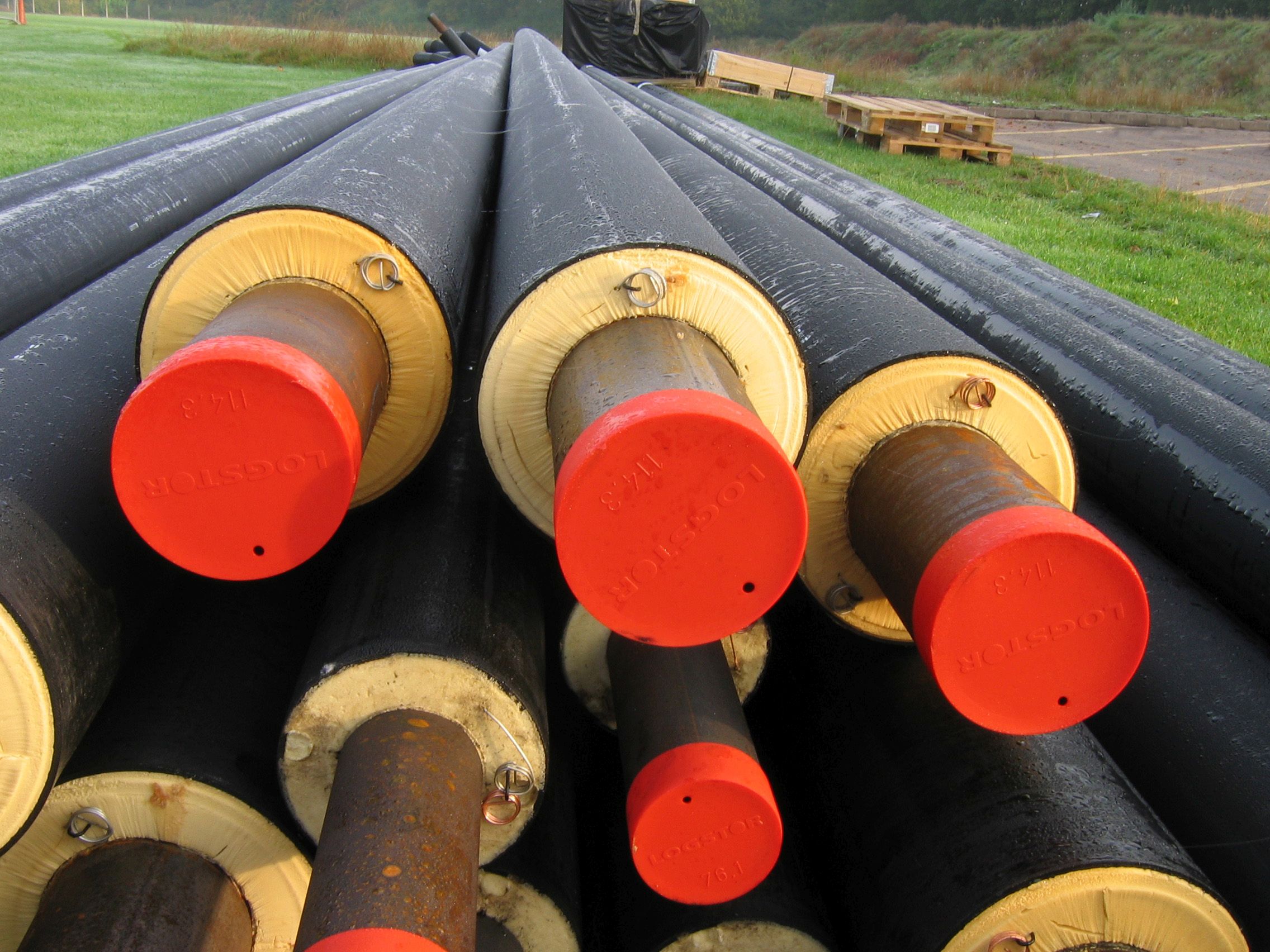News Archive
District heating part of energy strategy
The Danish municipality of Ringkøbing-Skjern plans to become self-sufficient on a renewable energy supply by 2020. A part of this plan is the transformation of the district heating from natural gas to renewable sources. The goal is to go from 40% to 60% renewable energy sources in the local district heating grid – and with current 50 % the municipality is already halfway. The focus is mainly on integrating wind energy.
Analyses by Aalborg University also show that the share of buildings with district heating connection can be increased from the current 50% to 70% by connecting all homes that are in the district heating area to the grid, and the goal in the municipality’s Energy2020 Strategy is that in 2020 all homes in district heating areas will be connected.
As a part of the plan, the local district heating company Ringkøbing Fjernvarme is installing a gas driven heat pump which will supply 30,000 MWh a year to the heating consumers, about 25% of the total supply, supplementing the current 30,000 m2 solar heating plant and 12 MW electric boiler.
Another part of the plan is to increase energy efficiency in the buildings and reduce the heating demand with 10%.
Potential for heat savings
During a collaboration with Ringkøbing-Skjern, 4DH PhD Fellow Stefan Petrovic from Aalborg University has analysed the potential for heat savings in the muncipality through a highly detailed GIS-based energy atlas and concluded that a reduction of heating demand by 25% can be achieved for less than 1.7 DKK/kWh.
The biggest part of the potential is found around the biggest towns, and heat savings should be done in buildings supplied from oil and natural gas boilers.
The Energy2020 Strategy
Self-sufficiency in renewable energy was approxi¬mately 56.2% in 2015.
The following nine initiatives will increase the current level of renewable energy by approximately 44.2%, bringing Energy2020 to its full objective of 100% in 2020:
|
Initiative
|
Impact
|
Target
|
|
Reduction in housing heat consumption
|
0.2
|
10% reduction in housing heat consumption: 288 TJ/ year
|
|
Renewable energy in businesses
|
1.0
|
20% of the industry’s consumption changed to renewable energy
|
|
Less energy consumption for road transport
|
0.8
|
10% reduction in energy consumption for road transport: 177 TJ/year
|
|
More renewable energy in district heating
|
4.8
|
Increased from 40% to 60% renewable energy in the district heating
|
|
Change oil boiler to renewable energy
|
1.9
|
2/3 of individual oil kettles changed to renewable energy
|
|
New wind turbines
|
22.0
|
Wind power is increased to 6,000 TJ/year, 2.4 times the existing electricity consumption
|
|
New solar cell plants
|
1.3
|
3 planned field plants with solar cells covering 5% of the municipality’s total electricity consumption
|
|
More production of local biomass
|
0
|
More production of local biomass is desired
|
|
Biogas plants
|
12.3
|
Annual biogas production of approximately 1,230 TJ
|
Missing redemption of one area will result in higher ambition level
of another.
Follow the heat production here: www.emd.dk/plants/rfvv
Two new projects to support heat planning in the EU
Two new EU supported projects are going to develop tools for planning of heating and cooling. Aalborg University, who is leading both the 4DH Research Centre and the Heat Roadmap Europe project, is involved in both projects.
Electricity, Heat, and Transport to be Merged into a Single Energy System
Europe and Denmark is facing major investments in our energy system. The long-term challenge is to switch to 100 percent renewable energy in a way that society can afford. 17 key energy players are now joining forces to redesign the energy system in a more sustainable direction. Innovation Fund Denmark is investing 2.28 million euro in the project called RE-Invest.
Lowering the heat loss with state-of-the-art pipes
The insulation value is the core focus of 4DH partner LOGSTOR's development of pipe systems for district and community heating. In co-operation with suppliers, the 4DH Research Centre, technological institutes and not least motivated by the customers’ needs, the pre-insulated pipe systems are subject to constant development.

Detailed GIS analyses shows possibilities for heat savings and DH expansion
The heat saving potential in the existing Danish building stock is between 70% and 80% of the existing heating demand. And to achieve a 100% renewable energy system in 2050, this heating demand should be reduced by 25% as a result of heat saving measures, demolition of existing and construction of new buildings, concludes a PhD dissertation by 4DH PhD Fellow Stefan Petrovic at DTU.
District heating and heat savings are especially important for the current as well as for the future Danish energy system, he concluded in the thesis, which he defended in October 2016.
More Articles ...
- High penetration renewable energy requires power reform in China
- Videos of keynote speakers and a recap of the 4DH Conference now online
- Best presenters at 2nd 4DH conference are working close to reality
- PhD defence: Change in district heating - transition to renewable energy from an economic perspective
